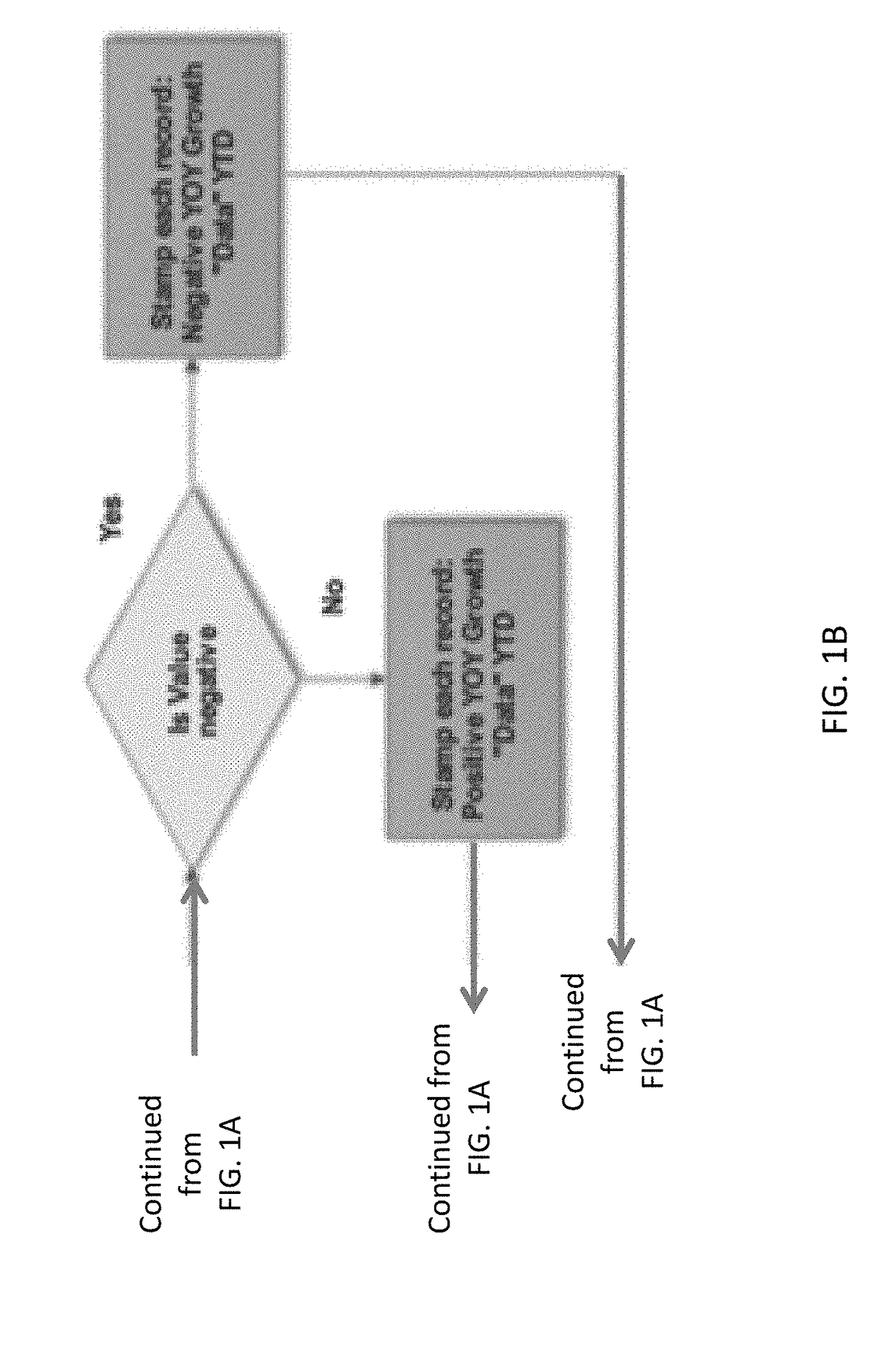Performance & predictive dimensions for business intelligence data
a business intelligence and predictive dimension technology, applied in the field of business intelligence processing methods, can solve the problems of inability to modify the cube to add more dimensions, inability to achieve significant computing resources and time, and inability to achieve mathematical calculations
- Summary
- Abstract
- Description
- Claims
- Application Information
AI Technical Summary
Benefits of technology
Problems solved by technology
Method used
Image
Examples
Embodiment Construction
[0026]Referring now to FIGS. 1A-2, the present invention features a business performance measurement and prediction system providing a user an ability to produce a business intelligence (BI) performance dimension (PD) using a geo-spatial database (101). A dimension is herein defined as a structure to categorize data in the geo-spatial database (101). A PD may then be defined as a dimension characterizing data based on a performance of said data, according to one or more business rules, over a time period. The system of the present invention may provide the user an ability to readily access the PD, or a nonperformance dimension (NPD), via a drill path.
[0027]The geo-spatial database (101) may comprise a plurality of data records storing business data. Each data record may be categorized by a unique combination of one or more dimensions and one or more data attributes. In other embodiments, a display interface (“PD wizard”) may be operatively coupled to the geo-spatial database (101). ...
PUM
 Login to View More
Login to View More Abstract
Description
Claims
Application Information
 Login to View More
Login to View More - R&D
- Intellectual Property
- Life Sciences
- Materials
- Tech Scout
- Unparalleled Data Quality
- Higher Quality Content
- 60% Fewer Hallucinations
Browse by: Latest US Patents, China's latest patents, Technical Efficacy Thesaurus, Application Domain, Technology Topic, Popular Technical Reports.
© 2025 PatSnap. All rights reserved.Legal|Privacy policy|Modern Slavery Act Transparency Statement|Sitemap|About US| Contact US: help@patsnap.com



